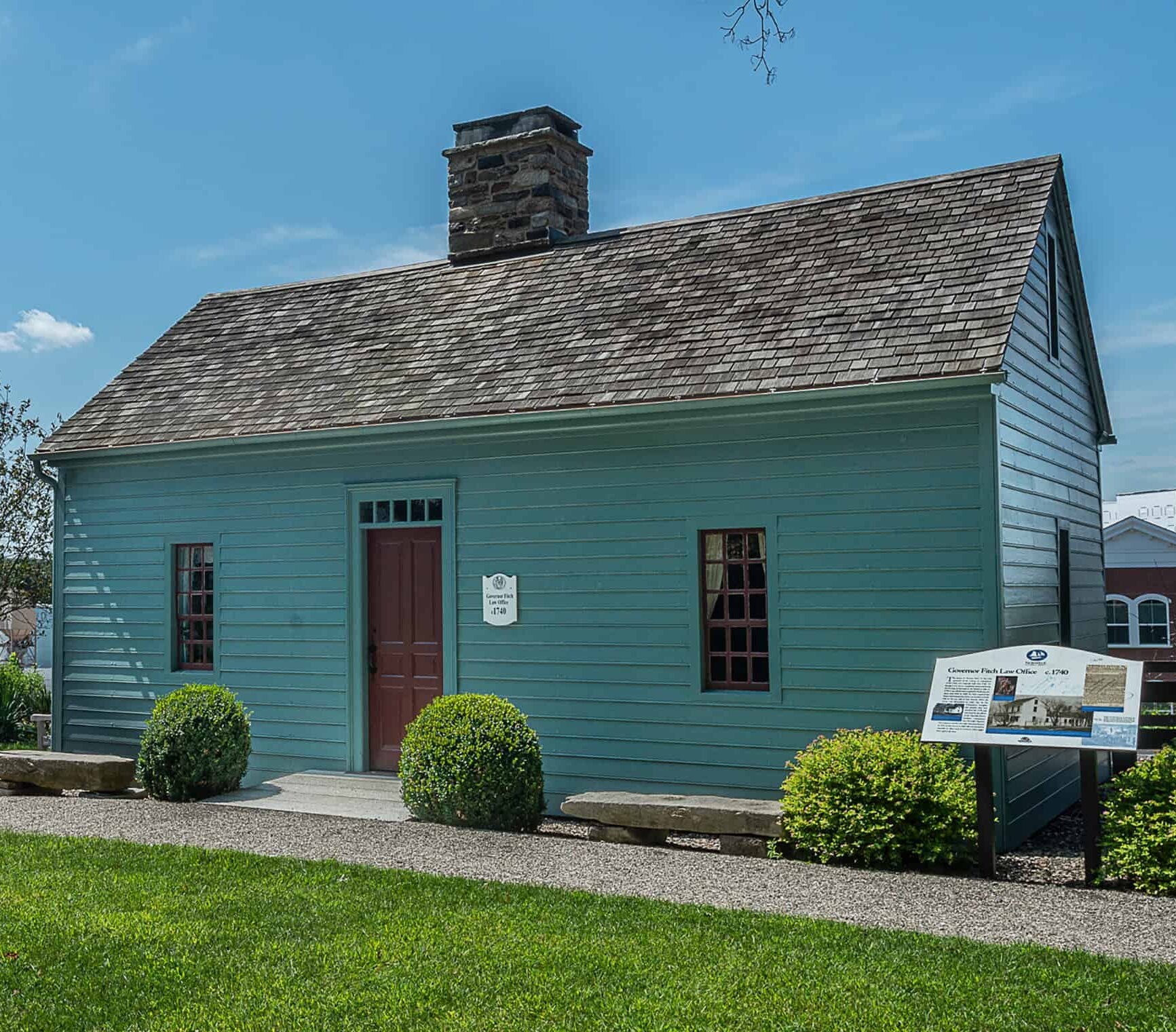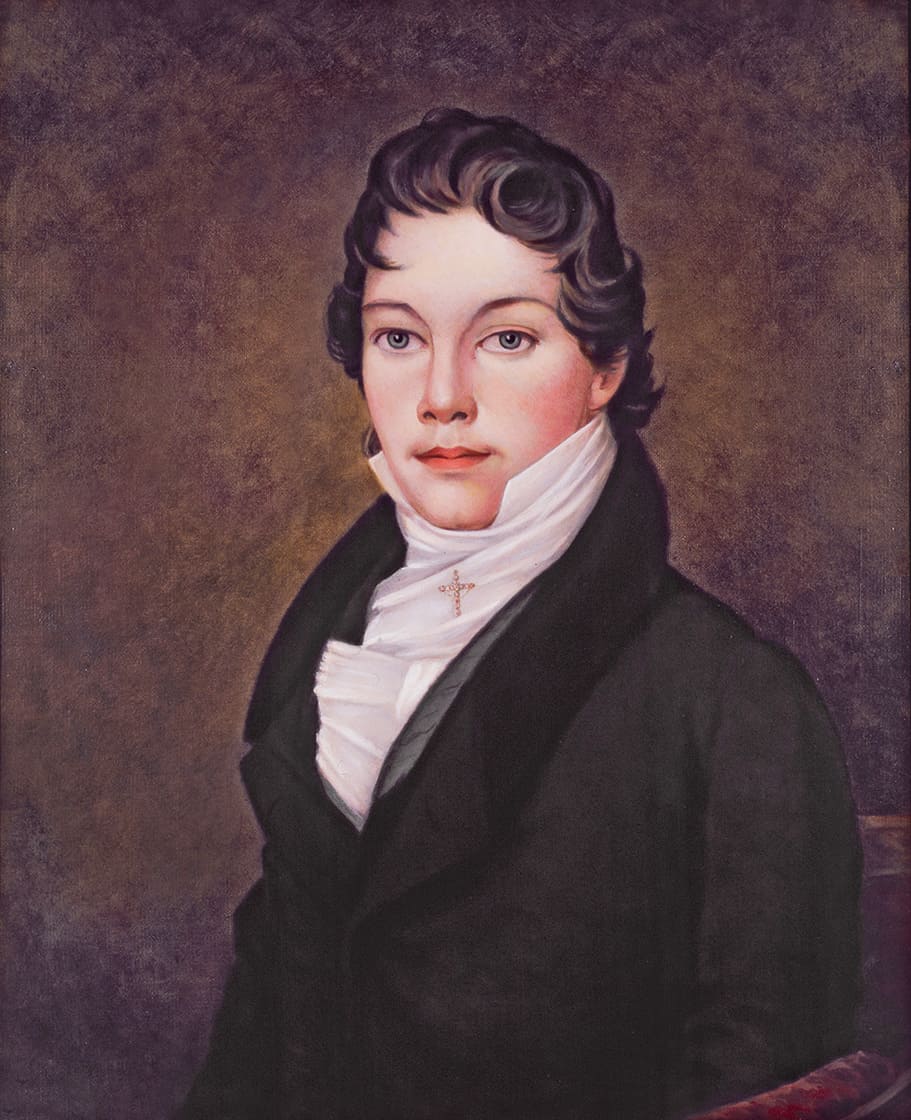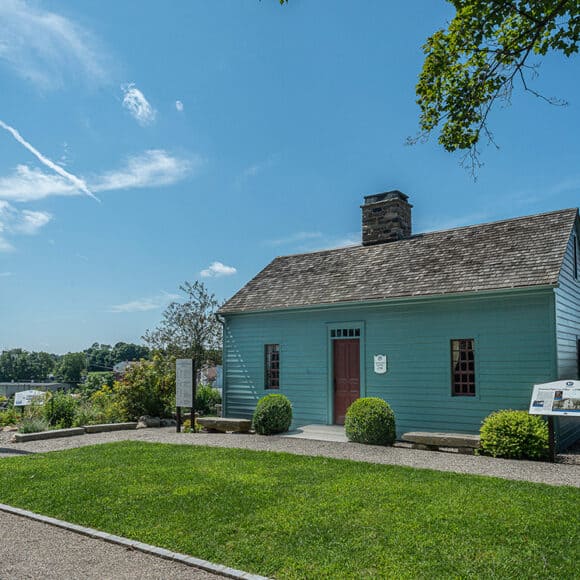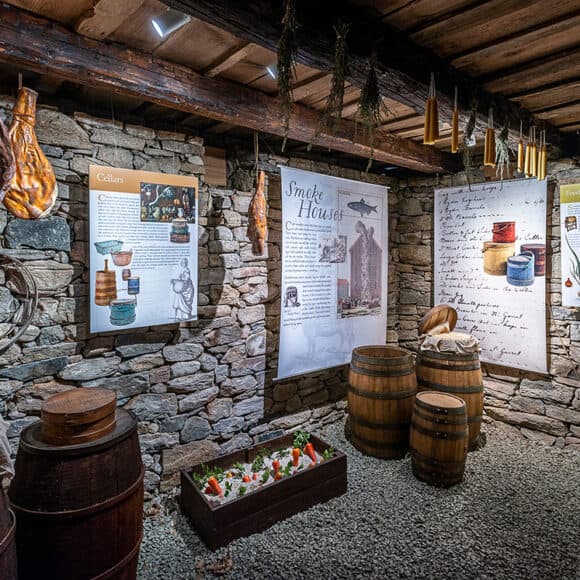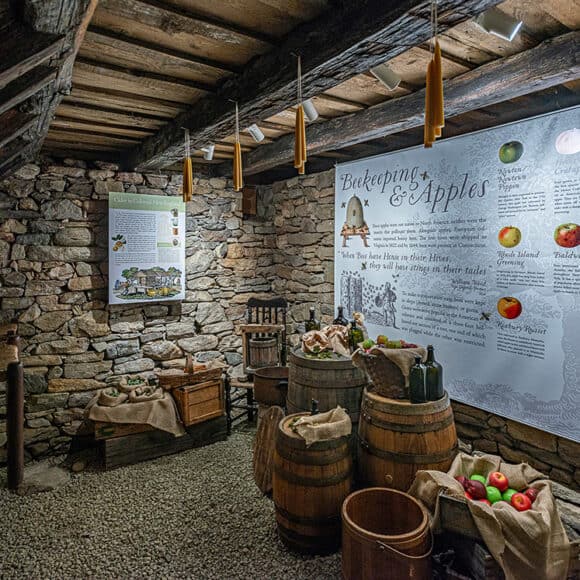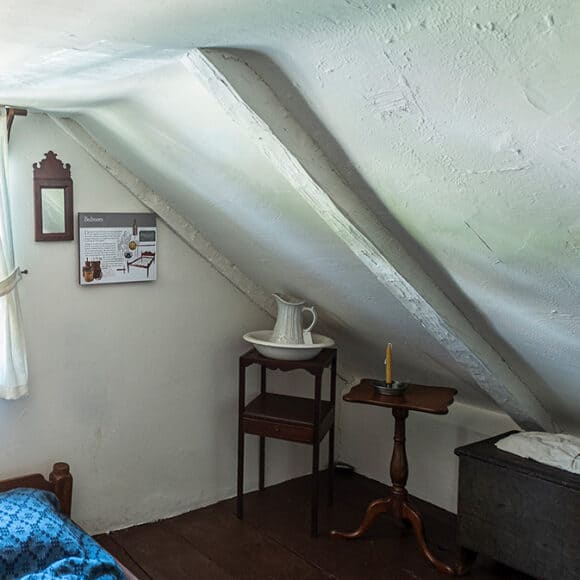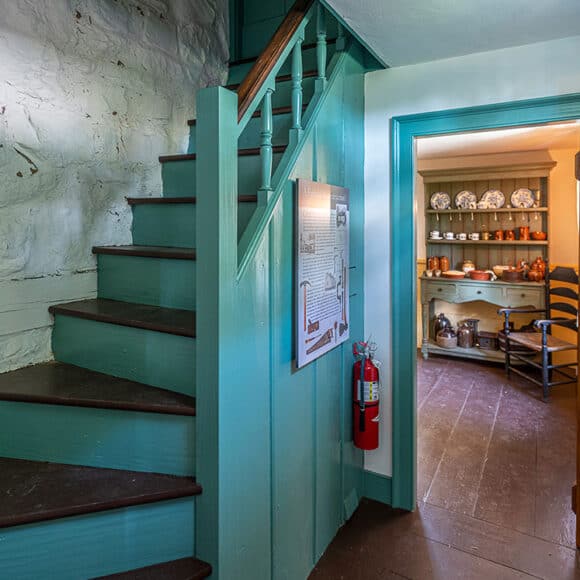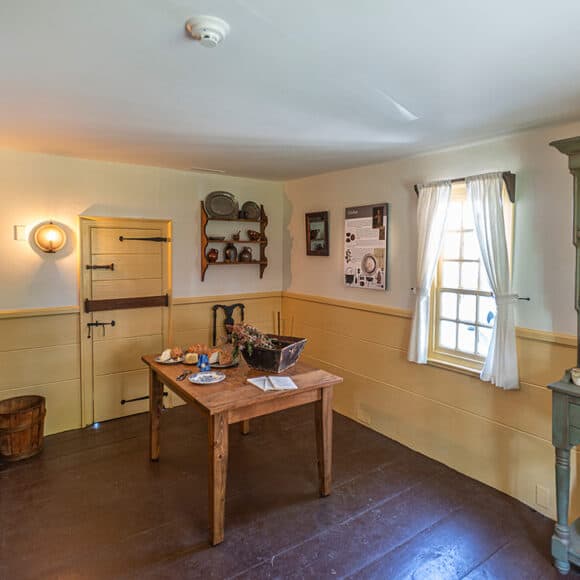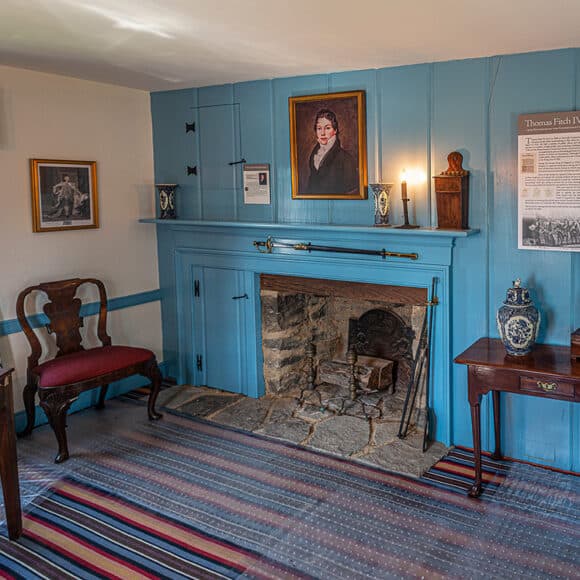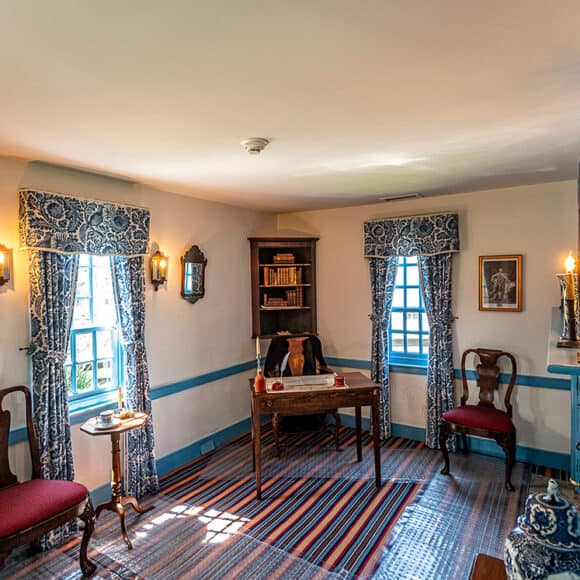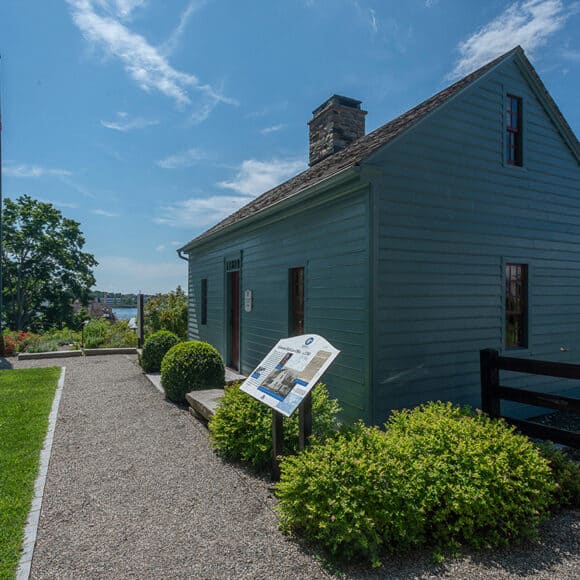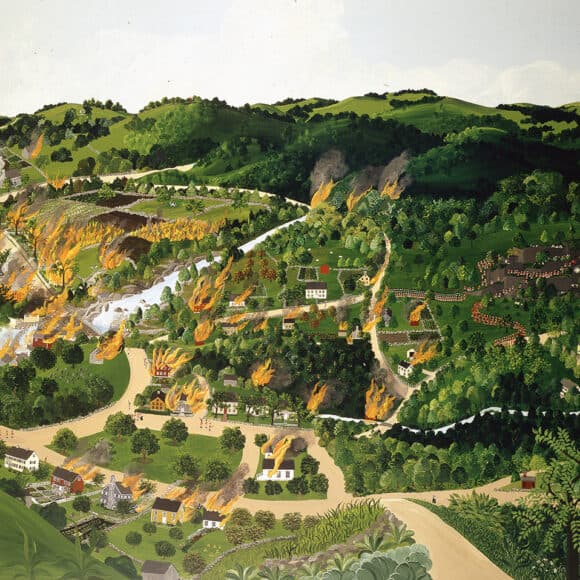Governor Fitch Law Office
A Colonial Governor’s Legacy
The building now known as the Fitch Law Office was originally the kitchen wing of Governor Thomas Fitch’s house which once stood at 173 East Avenue. While the house itself could not be saved ahead of the construction of I-95, local efforts saw the preservation of the kitchen wing. This portion of the building was moved to Hendricks Court, before being moved to its present location at Mill Hill in 1971.
By the time it was moved to Mill Hill, the building was “in rough shape.” The stairs were partly missing, the attic partly exposed through one of the gables and, to facilitate its move, the chimney was taken down to the roofline. In order to accommodate this new building, Mill Hill was altered; architect John Gaydosh organized 870 cubic yards of fill moved from the new Norwalk High School construction site to extend the flat surface southward with an additional 120 cubic yards of material to allow the cellar to be constructed under the Office.
Dr. Daryn Reyman-Lock is a native of Connecticut. After graduating from Lehigh University with a B.S. in Geologic Sciences and a B.A. in Archaeology, she matriculated to the University of Nottingham in England to complete a Masters and Ph.D. in Archaeology. Her research is concerned with the social constructs of space and phenomenology.
Upon returning to the United States in 2012, she began working as a historic preservation specialist. Dr. Reyman-Lock often works closely with non-profits to curate exhibits, catalogue and move museum collections, and research historic landscapes and buildings. She also consults for municipalities on a variety of projects.


